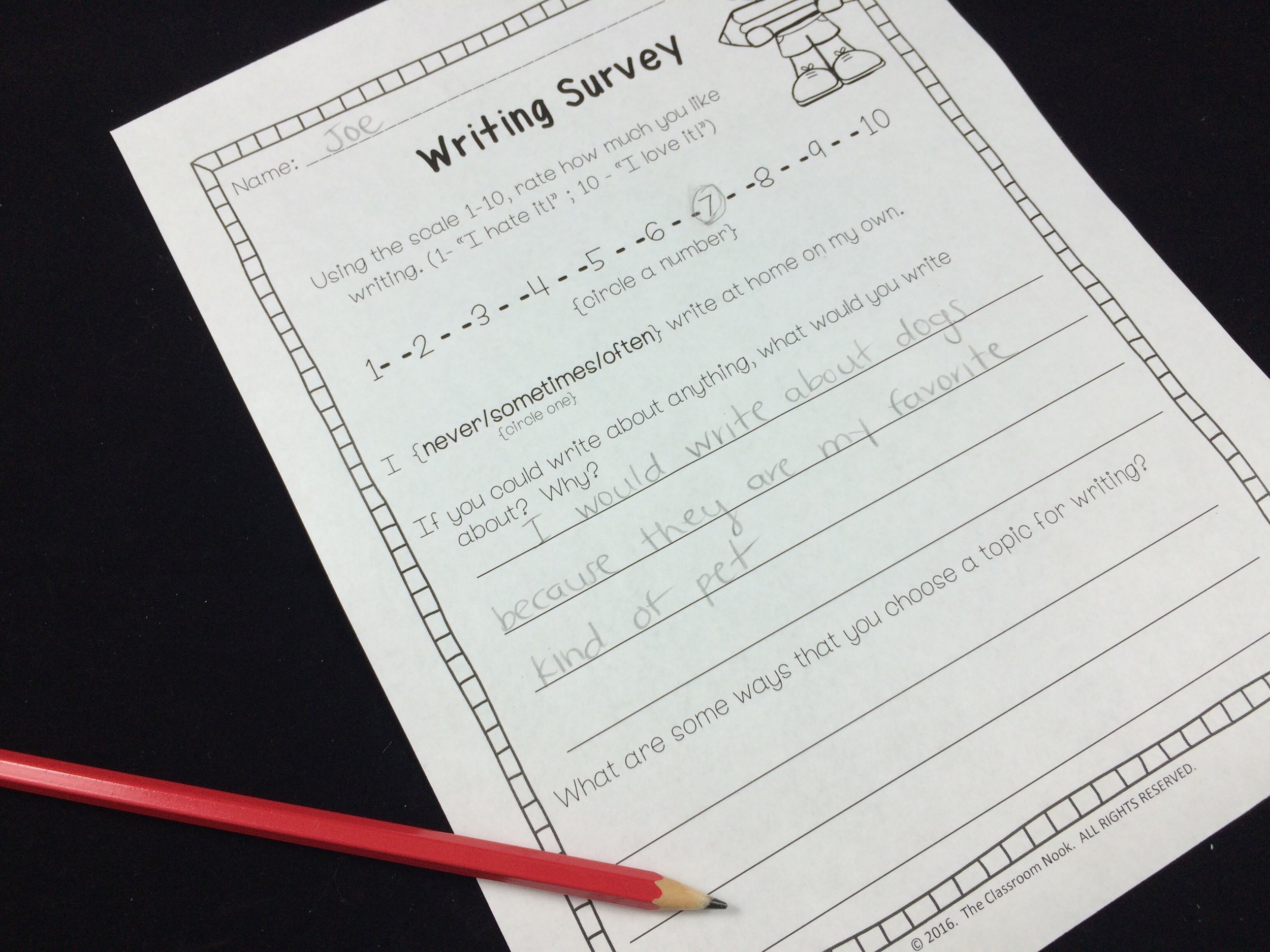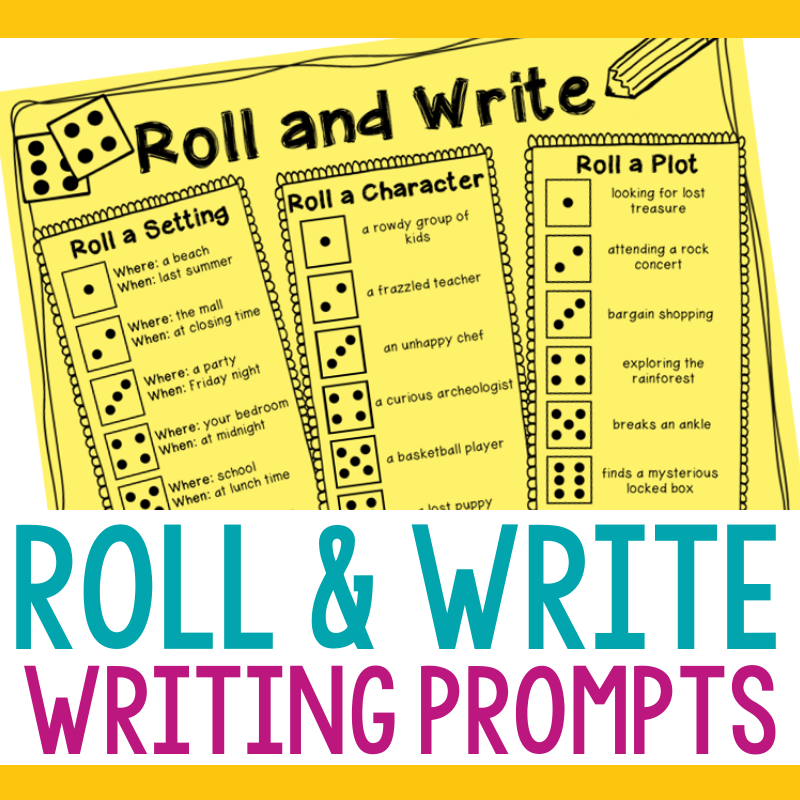Back to School Series: Launching Writer's Workshop
Love podcasts? Check out this post in the form of a podcast episode on The Classroom Commute Podcast:
If you've been following the Back to School Series on prepping for the school year, then you'll remember that last week I walked you through how I set up my readers workshop at the beginning of the year. If you haven't read that post, you may want to check it out as it gives a nice overview of the workshop model in general and will give a lot of background knowledge that can be also applied to what we will be talking about in this post.
Well this week, I'd like to continue the conversation into writers workshop. If you like the workshop model for readers workshop, then you would probably like the same format for your writers workshop . Using the workshop model for both provides a nice consistency for your student as well.
Like readers workshop, writers workshop follows a similar flow, beginning with a short mini lesson, leading into a longer work period, and concluding with a closing time.
I liked using the workshop model for my writing block because, like readers workshop, there is a lot of flexibility and allows you to meet the needs individual writers.
Before we dive in to all things writer’s workshop, be sure to download my FREE Teacher’s Guide to Writer’s Workshop below!
free teacher’s guide to writer’s workshop
Writer's Workshop has a LOT of moving parts! This guide will help you make sure all those parts work together and run smoothly...right from the beginning!
You'll even find a 20-Day calendar of lessons to complete during the first few weeks of using the workshop model!
One of the very first things I would do when launching writers workshop was to have students take a writing survey. Here students could share how they felt about writing, what types of things they like to write about, and share anything they would like me to know about them as writers.
Like everything else you start at the beginning of year, much of your instruction revolves around routines and procedures. Writers workshop is no different. For the first few weeks you will be getting your students acquainted with your behavioral and procedural expectations during your writing time. In fact, the mini lessons of your writers workshop will be used to teach those important expectations.
The Mini Lesson
While gathered together as a whole class, you will teach and model your expectations for writers workshop. For example, when you want to teach your students about how to sit appropriately for a read-aloud, you would first explain your expectations and then have them practice your expectations as you share a story with your students.
Let's take a look at the topics you might include in your mini lessons when first launching writers workshop at the beginning of the year.
What is writers workshop?
How to come to and from gathering area
What materials are used for writers workshop?
Where do I keep my materials?
Taking care of yourself during writers workshop
What do writers write about (generating ideas)?
The writing process
Behavioral expectations for independent writing
How to peer edit and review
How to give feedback to your peers
Using the authors chair for sharing our writing
Developing and tracking individual writing goals
As you may have noticed, the mini-lessons focus primarily on those routines, procedures, and behaviors for writers workshop, mixed with a little of actual writing instruction. Doing a LOT of routine/procedure/behavior instruction and a LITTLE of writing instruction gives your students lots of time to learn the ins and outs of writers workshop before you actually expect them to develop their writing skills. Once they master how to act during writers workshop, then the focus can be on what they write.
The Work Period
Since you most likely will not be beginning any specific writing units during the first few weeks, you'll have the opportunity to use your work period to get to know your students as writers using short writing activities.
You may want to provide your student with a selection of writing prompts to choose from to help guide their writing at the beginning. The writing your students produce at the beginning of the year will give you great insight into their writing needs.
Grab a FREE set of “Roll-and-Write” writing prompts below!
free “Roll & Write” activity
Turn traditional writing prompts into a game with this fun Roll & Write activity. Using this freebie and a simple die, students have endless ideas for their next story!
Put it at your next writing center or use it with your fast finishers for an easy-prep activity!
During the work period, my students work from their writer's notebook. In their writers notebook, student keep important reference sheets, do free writing, keep important notes from our conferences together, keep track of their writing goals, and even keep a list of ideas for future writing pieces.
Much of the first few weeks is spent on getting students acquainted with the information inside their writers notebook. We practice using the pages and resources in their notebook as well as learn how to keep their notebooks organized and where the notebooks will to be kept in the classroom.
The Closing
Although short, the closing is an important time of your writers workshop. Here your students will share their writing with their classmates, showcasing what they completed during the work period. This can be super valuable as students can hear examples from their peers to help them in their own writing.
In my classroom, we called this time "author's chair". I had a special chair used specifically for this sharing time. You might even choose to develop a rotating schedule where students know ahead of time when they will be asked to share their writing. This will keep the time organized and will help any students who don't like to be put in the spot time to feel prepared. For me, I was able to fit in 2-3 students in for sharing each day. If time is limited, you may choose to only having author's chair 2-3 times a week.
Another tip for keeping this time organized is to give students something specific that you want them to share such as a writing strategy that they used in their writing that day. Of course, there would be a mini-lesson allllll about how to do author's chair (how to share, how to listen to your peers, how to give feedback...etc.)
You May Also Like to Read: SETTING UP A SHARE CHAIR DURING YOUR LITERACY BLOCK
Writers Workshop Through the Year:
Once you've established your routines and procedures for your writers workshop, you'll be able to implement other writing units into your workshop.
These units may include a specific writing genre (memoirs, mystery writing, informational writing...etc.), writing pieces that support things being taught in other content areas (such as animal reports when students are studying habitats in science), or units that help teach important writing skills and strategies. Often times your school curriculum will dictate the writing pieces your students will produce.
Conferencing During Writers Workshop:
An important element of writers workshop is the time you spend conferencing with your students. Typically this will happen during the work period of your writers workshop while student are working independently. Developing a conferencing schedule will help ensure you meet with each student regularly.
During your conference you could:
spend time reading students' writing and giving feedback
helping them develop writing goals based on what you observe and give them a plan of action for what to work on
model a writing strategy that the student could benefit from
help edit and revise a students' writing piece
offer support
In addition to my own conferencing binder where I kept notes about my students' writing (see above image), there was also a more kid-friendly conference sheet in my students writing notebooks that I would fill out with information of things we discussed. They could refer to this when they were working on their own.
You May Also Like to Read: WHAT TO DO DURING WRITING CONFERENCES
Like readers workshop, you will find that establishing a solid writers workshop takes a lot of effort, specifically at the beginning of the year. It can be very overwhelming, especially if you don't know where to begin. The information that I've provided in this post includes snippets of my complete guide to "Getting Started in Writer's Workshop." I designed this unit to be a step-by-step guide to setting up your writers workshop from start to finish.
In the unit I've provided:
Detailed teacher lesson plans
Materials to set-up your students writer's notebook
Anchor slides to help teach important concepts
Teacher resources, forms, and conferencing templates
Bulletin board set
...and lots more to send you well on your way to writers workshop bliss :)
You can see all the details by clicking the image below:









